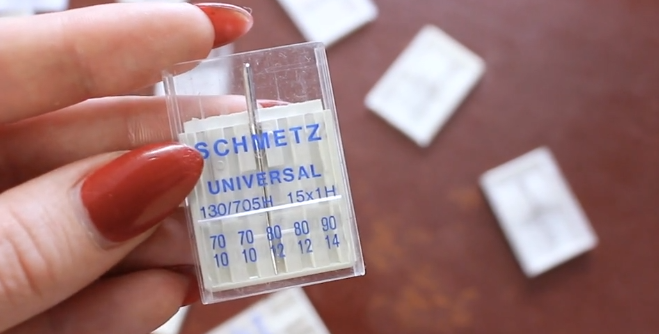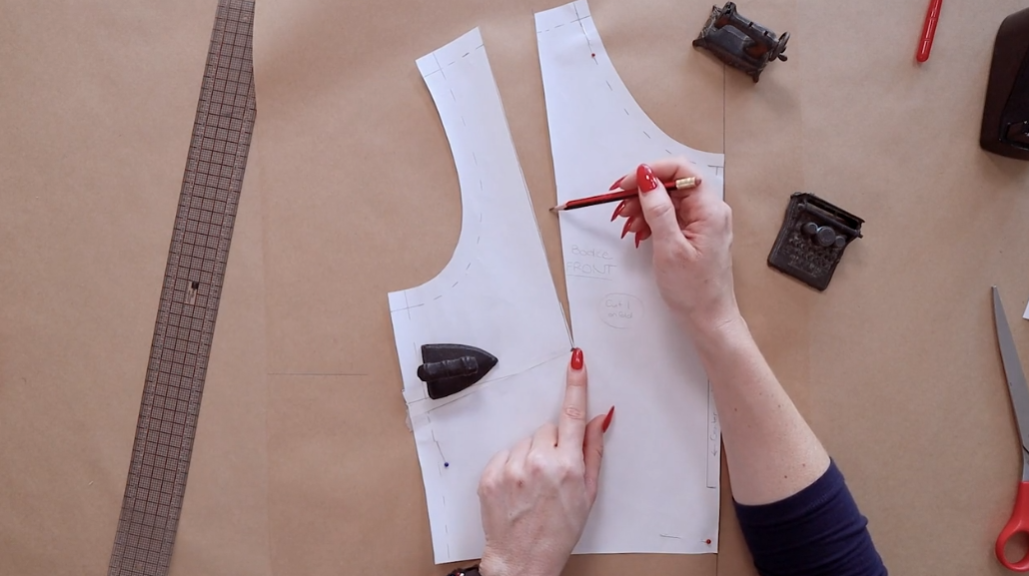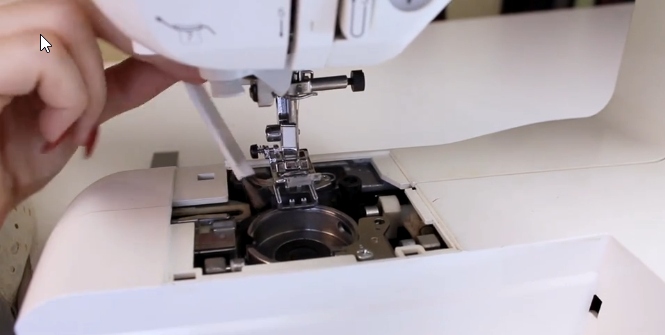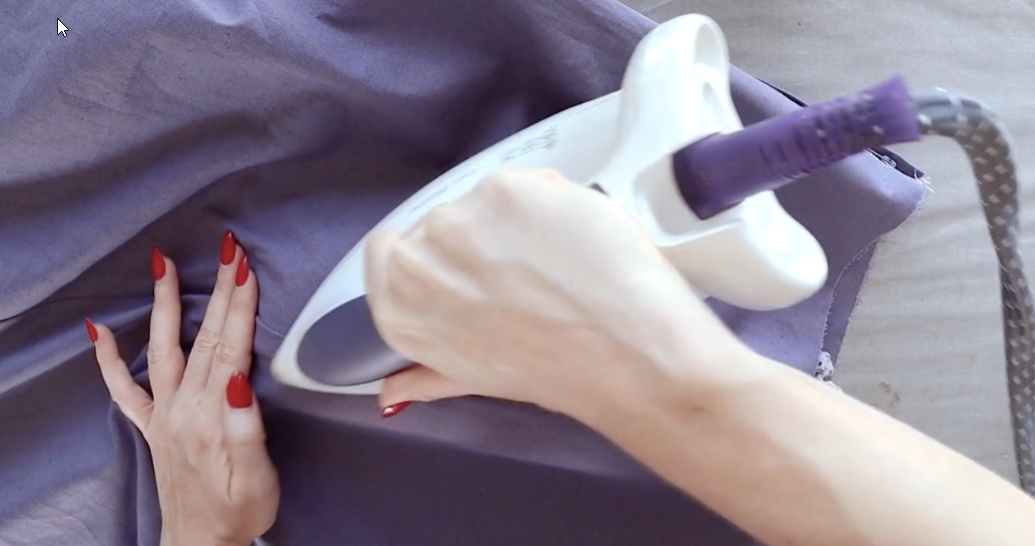- in Sewing by Evelyn Wood
- |
- 1 comments
14 Things I Wish Someone Told Me About Sewing as a Beginner!
It doesn't take you very long when you first start sewing to realize that learning to sew is way more than just learning to use your machine.
These are the things that I wish someone had told me and made me realize what I needed to know about when I was learning to sew.
I can't tell you the amount of those light bulb moments you have in your sewing journey as you go along. And it's pretty comical sometimes when you look back because you think it's so obvious, but why didn't anyone tell you about this?
There are all kinds of different needles for different fabrics!
I wish someone had mentioned different fabrics suggestions on the pattern envelope, but they don't tell you about various needles suggestions. Do they?
Change your needle.
How long have you been sewing with that same needle in your machine? I know I had it in there for a very long time before I realized that yes, they get blunt, and it causes all sorts of issues.
Don't be scared of cutting the fabric.
Having anxiety over cutting into the fabric is one thing that does hold us back. And I know it held me back for such a long time, just being that you're going to ruin it or ruin your fabric, waste your fabric, right?
Yes. So, there are points that we're going to cover in these following few items that will help mitigate this fear of cutting into our fabric, but it does hold us back as new sewists. And don't be scared of fabric. It's just fabric. Nothing terrible is going to happen. As I said, you can always get more.
It's okay to make mistakes.
I wish someone had sat me down and told me that mistakes are part of the process. The mistakes are part of the learning process. It is how we learn, and we expect to make mistakes.
It's not going to turn out the first time we all fall into the trap of feeling like we're terrible at this sewing thing because we're making all of these mistakes, and it's just not turning out perfect the first time.
Just unpick, redo it, and move on. It's part of it. Don't even give it a second thought; your sewing will improve a lot more when you take it as part of the sewing process; take your time.
Take your time; it's not a race.
Did you know that you can sew at a snail's pace on your sewing machine? You don't have to go pedal to the metal and floor it the entire way; who knew such a thing.
I wish someone told me that it is okay and acceptable to just do one stitch at a time, particularly in all those problematic areas; that's how you get a good result.
Patterns need to be adjusted to fit your body.
I know we have that, this idea that, because we're making it ourselves, it'll somehow just mean that it fits our body, right? Because we've made it ourselves. You don't think about and realize at that time that well, yes, but you need to do the whole fitting process in between here and here, making it yourself to make it fit you.
So yeah, you need to adjust those patterns to fit. Like you go into a store, if you randomly pick out sizes as you do with patterns, they're not going to fit you straight away.
And then we go to the effort of making up a garment, like the whole way, without realizing that we need to fit it along the way and put it on and think, why doesn't this fit?
I made it myself. I think we all have that experience. The very first garment we make because we don't realize just how much fitting and adjusting goes into making a couture custom-made one-of-a-kind garment for our bodies. But that is half the fun in the process of learning too. So I think it would be nice if someone explained that.
Clean your machine.
We have all been here and experienced this. Remember that moment you realized that the metal plate comes off the top of the machine, and then you saw what was underneath. We often don't realize that we're supposed to clean our machines regularly.
Take a break.
Take a break when you're tired, stop sewing, come back the next day. Nothing good is sewn after midnight or whenever, whatever that time is for you, whenever you hit that point, and you're tired, you're getting frustrated.
Something's not working out. I know from personal experience you keep going, trying to push through late at night. And it just turns into even more of a disaster. It's best to fold it up, put it down, put it away, come back the next day, recover with fresh eyes.
Sewing is so much more than learning to use your machine.
I wish someone would have pointed out just how much more sewing is than just learning to use your machine. That is, but a speck of what sewing involves. And you don't realize this when you start again.
Pinning is important.
Pinning is way more important than it seems the first time, right? I'll hold them together and run them through the machine. Easy peasy. It turns into a disaster, of course. And then you decide to use a few pins, and it turns out a bit better.
And so, of course, you pin everything, lots of pins all the time, and you get better and better at sewing. And then, as you come to getting quite good, you use fewer pins and a few fewer pins.
And when you get very much at the other end, you can then sew without pins and put two bits of fabric together because you've learned how to manipulate the fabric and hold it together.
Test everything.
I wish someone had told me to test everything. I luckily experienced this intuitively and that when I would test anything new, I would always do test stitches.
If you've got new fabric, test the stitches and the same finish, and make sure everything will work on that fabric. Toiles and mock-ups, they're not a waste of time. Test the garment first, test the fit. It is worth it in the long run.
When I realized how to take the time to do that, I improved my sewing.
Pressing is important; don't skip it.
But it's something that no one sort of sits you down and tells you about, just like how vital pressing is.
Please don't ever skip it. Whenever I was so tempted, we sewed on the pattern instructions, and it's just this one word, do this or press this. And you think, ah, it'll be right. I'll hold these themes down and keep going.
I wish it had been drilled into me or someone showed me just what a significant difference pressing makes.
How important grainline is.
And then, of course, no one tells you just how vital the green line is. I wish that I understood how important grainline was when I started sewing because I think we've all gotten the pattern pieces, moved them all around, and pushed them all down to make them fit on the fabric.
After all, what difference would it make? I know you know what I'm talking about because we have all done this. I think every single sewist can relate to that one green line is so important.
It's a big difference between having a garment look right and just looking wrong. And sometimes, it just turns into a complete disaster when you move all your different pattern pieces around on grainline.
It's not a race; slow down.
So, I wish someone told me that and that it is not a race, be patient with your sewing. Just, it takes a long time to make a garment.
It's okay to slow down and work on the craft and the art of making something well because it does take a long time to make a proper garment.
And it is worth all the extra effort and time in the end when you have that gorgeous garment that fits you.
There is one awkward unpleasant conversation that I also have to have. And in this video, I want to arm you with some answers to the inevitable question that if you haven't already, you will get: can you sew this for me? And of course, when you want to say no, Welcome back. My friends. It is wonderful to see you here.
Until next time...
Bye
Evelyn xx





Thank you for this. Im in the process of starting to sew. I will admit, im a bit nervous to even turn the machine on. Thank you for this information and all your videos.
Bless you.